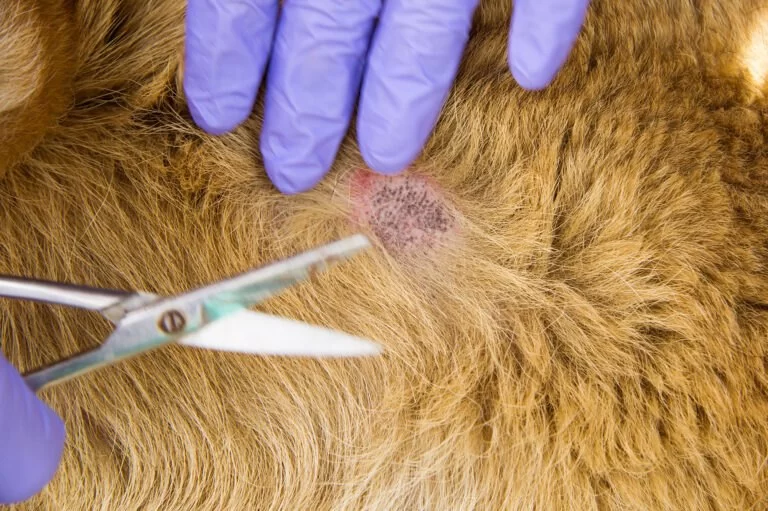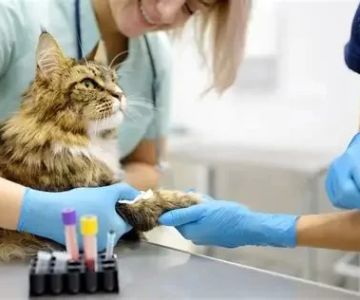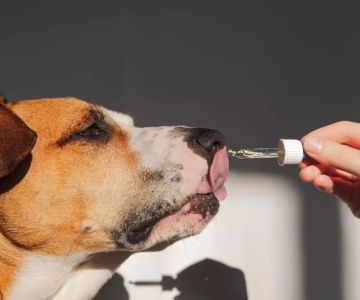How to Identify and Treat Hot Spots on Dogs Before Infection Sets In With Natural Remedies
- 1. Understanding Hot Spots on Dogs
- 2. Symptoms and Causes of Hot Spots
- 3. Treating Hot Spots with Natural Remedies
- 4. How to Prevent Hot Spots from Recurring
- 5. Real-Life Cases: Treating Hot Spots Effectively
1. Understanding Hot Spots on Dogs
Hot spots, also known as acute moist dermatitis, are localized areas of skin inflammation that can become painful for your dog. These spots are often caused by excessive licking, scratching, or biting, and they can quickly escalate into infections if not treated promptly. If you’re a dog owner, understanding what causes hot spots and how to manage them is key to keeping your furry friend comfortable and healthy.
What Are Hot Spots?
Hot spots are moist, red, irritated areas on the skin that often appear on your dog’s face, paws, legs, or hips. These spots are typically caused by a reaction to bacteria, allergies, or parasites like fleas or ticks. The moisture from licking or chewing exacerbates the condition, making it difficult for the area to heal without intervention.
2. Symptoms and Causes of Hot Spots
Recognizing hot spots early can prevent them from worsening. Below are the common symptoms and causes that every dog owner should be aware of:
Common Symptoms of Hot Spots
- Redness and Inflammation: The affected area will appear red and swollen, often accompanied by moistness.
- Excessive Licking or Chewing: Dogs tend to lick, chew, or scratch at the affected area, which worsens the condition.
- Hair Loss: The fur around the hot spot may fall out due to the irritation and excessive grooming.
- Odor: If the hot spot becomes infected, it may have a foul smell.
Common Causes of Hot Spots
- Allergies: Dogs with food or environmental allergies are more prone to developing hot spots.
- Fleas or Ticks: Flea infestations or tick bites can cause intense itching, leading to hot spots.
- Moisture: Wet fur or humidity can promote the development of hot spots, especially in dogs that have long, thick coats.
- Infections: Bacterial or fungal infections can also cause skin irritation, leading to hot spots.
3. Treating Hot Spots with Natural Remedies
Natural remedies can be a great first line of defense against hot spots, especially when caught early. These remedies can help soothe the skin, reduce inflammation, and prevent further infection.
1. Aloe Vera
Aloe vera is a natural anti-inflammatory and antimicrobial agent. Applying fresh aloe vera gel directly to the hot spot can help reduce redness and irritation. Make sure to use pure aloe vera without added chemicals or alcohol.
2. Coconut Oil
Coconut oil has antibacterial and antifungal properties that can help soothe hot spots and speed up healing. Apply a thin layer of coconut oil to the affected area once or twice a day. Be cautious, as some dogs may lick the area, which could cause further irritation.
3. Apple Cider Vinegar
Apple cider vinegar has natural antiseptic properties and can help to balance the skin's pH. Dilute apple cider vinegar with water (1:1 ratio) and apply it to the hot spot using a cotton ball. Avoid using it on broken skin as it may cause irritation.
4. Oatmeal Baths
An oatmeal bath can provide relief to a dog suffering from itchy, inflamed skin. Ground oatmeal can be added to warm water to create a soothing bath. This can help to calm irritated skin and reduce itching associated with hot spots.
5. Calendula Cream
Calendula is known for its healing and anti-inflammatory properties. You can apply a calendula cream or ointment to the hot spot to reduce swelling and speed up the healing process. Make sure to choose an ointment that is safe for pets.
4. How to Prevent Hot Spots from Recurring
While natural remedies can effectively treat hot spots, preventing them from recurring is just as important. Here are a few proactive steps you can take to help your dog avoid hot spots in the future:
1. Regular Grooming
Regular grooming is essential, especially for dogs with thick or long coats. Brushing helps to remove dirt, debris, and tangles that can irritate the skin. It also allows you to spot potential issues before they become more serious.
2. Flea and Tick Control
Consistent flea and tick prevention is key in stopping the itch-scratch cycle that can lead to hot spots. Consult with your vet to determine the best flea and tick treatment plan for your dog.
3. Bathing and Skin Care
Regular baths with a gentle dog shampoo can help keep your dog’s skin clean and free of irritants. Be sure to dry your dog thoroughly after bathing, especially if they have long fur that can trap moisture.
4. Address Allergies
If your dog suffers from allergies, whether to food or the environment, managing those allergies can prevent the itching and scratching that often leads to hot spots. Work with your vet to identify and treat underlying allergies.
5. Real-Life Cases: Treating Hot Spots Effectively
Many dog owners have successfully treated hot spots with natural remedies. Here are a couple of real-life examples:
1. Lucy’s Battle with Hot Spots
Lucy, a Golden Retriever, developed a hot spot on her back after a flea infestation. Her owner, after applying coconut oil and aloe vera gel, was able to soothe the area and prevent the infection from spreading. Regular flea treatments and weekly grooming have since kept Lucy’s hot spots under control.
2. Max’s Skin Relief
Max, a French Bulldog, was prone to hot spots due to his sensitive skin. His owner used an oatmeal bath and apple cider vinegar to help treat the hot spots. Max’s skin healed quickly, and his owner also made changes to his diet to manage allergies, reducing future flare-ups.












